




Table of Contents
- Introduction to the Maharashtra Stamp Act
- Key Provisions of the Maharashtra Stamp Act
- Recent Amendments and Updates
- How to Pay Stamp Duty in Maharashtra
- Common Transactions Requiring Stamp Duty
- Impact of Stamp Duty on Real Estate Market
- Conclusion
- Faq's
Introduction to the Maharashtra Stamp Act
The Maharashtra Stamp Act, a crucial legislation in the state of Maharashtra, governs the levy of stamp duty on various legal documents. Understanding its intricacies is essential for anyone involved in real estate transactions, business agreements, or legal documentation in Maharashtra. This article delves into the key aspects of the Maharashtra Stamp Act, offering a comprehensive overview for the current year.
The Maharashtra Stamp Act is a state-specific legislation that prescribes the rates of stamp duty on various legal instruments. Stamp duty is a form of tax collected by the government on legal documents, which is essential for their validity and enforceability. The Act ensures that all transactions are properly documented and taxes are duly paid, contributing to the state's revenue.
Here's the website: https://igrmaharashtra.gov.in/Home
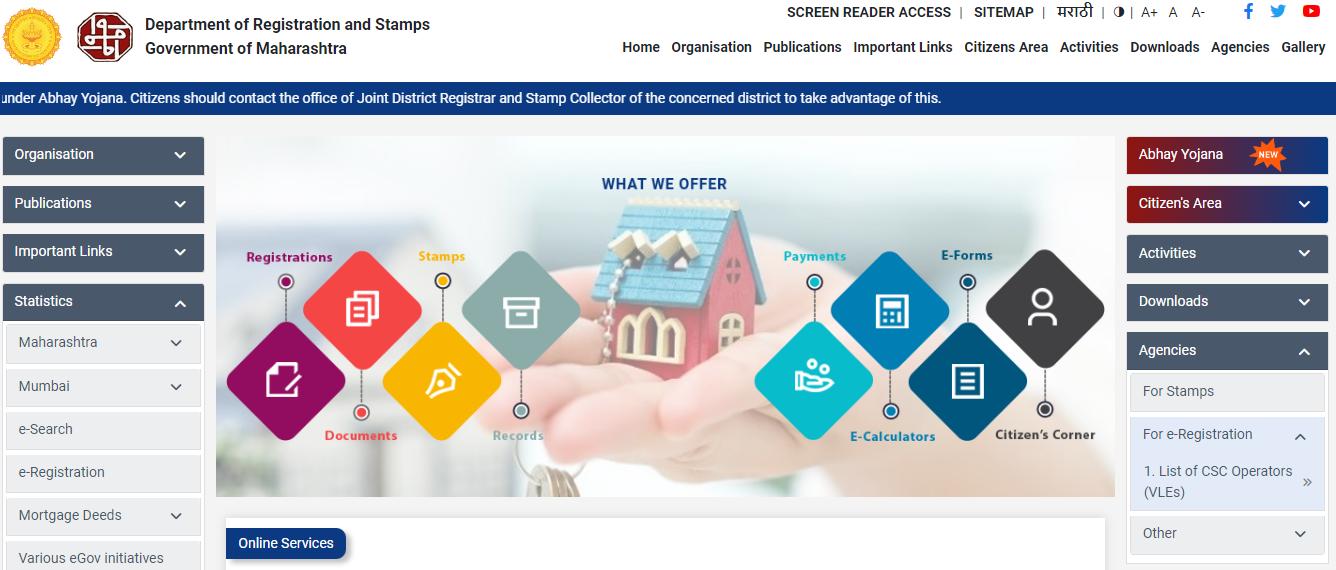 Maharashtra Stamp Act Website
Maharashtra Stamp Act Website
Key Provisions of the Maharashtra Stamp Act
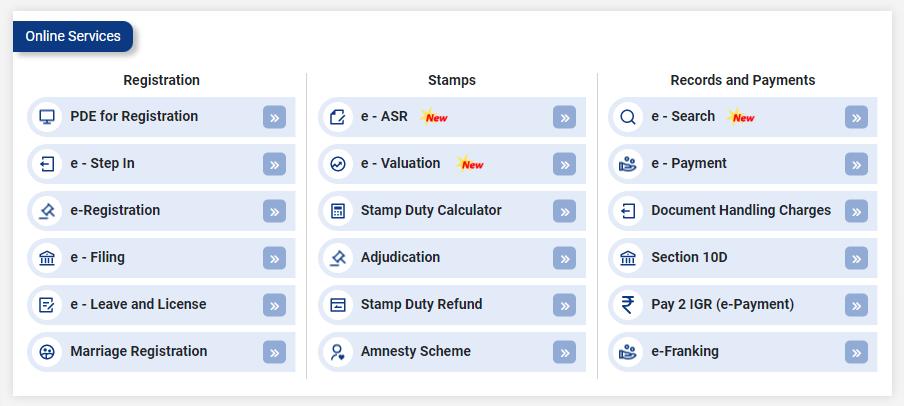 Services Available on the Website
Services Available on the Website- Types of Instruments: The Act covers a wide range of instruments, including agreements, conveyances, mortgages, leases, bonds, and more. Each type of instrument has a specific rate of stamp duty applicable.
- Stamp Duty Rates: Stamp duty rates vary depending on the nature of the document and the transaction value. For instance, the stamp duty on a conveyance deed differs from that on a lease agreement. The government periodically revises these rates, and it's crucial to stay updated with the latest changes.
- Penalty for Non-Compliance: Failing to pay the required stamp duty can lead to severe penalties, including fines and legal repercussions. The Act provides for penalties that can be up to ten times the unpaid duty.
- Adjudication of Stamp Duty: If there is any ambiguity regarding the amount of stamp duty payable on a document, parties can seek adjudication from the Collector of Stamps. The adjudication process ensures that the correct duty is paid, preventing future disputes.
- Refund of Stamp Duty: Under certain circumstances, such as cancellation of a transaction, the Maharashtra Stamp Act allows for the refund of stamp duty. The procedure for claiming a refund involves submitting an application to the concerned authority along with the original stamped document.
Recent Amendments and Updates
In 2024, there were significant updates to the Maharashtra Stamp Act to streamline processes and enhance transparency. Some key changes include:
- Digital Stamping: The government has introduced digital stamping to simplify the payment of stamp duty. This move aims to reduce paperwork, prevent fraud, and make the process more efficient.
- Revised Stamp Duty Rates: The state has revised the stamp duty rates for certain categories of documents to align with current market conditions and economic realities.
- E-Registration of Documents: E-registration of documents has been promoted to expedite the registration process. This initiative is part of the government's push towards digital governance.
How to Pay Stamp Duty in Maharashtra
1. Online Payment: The Maharashtra government provides an online portal for the payment of stamp duty. Users can log in, fill in the necessary details, and make the payment using various online modes.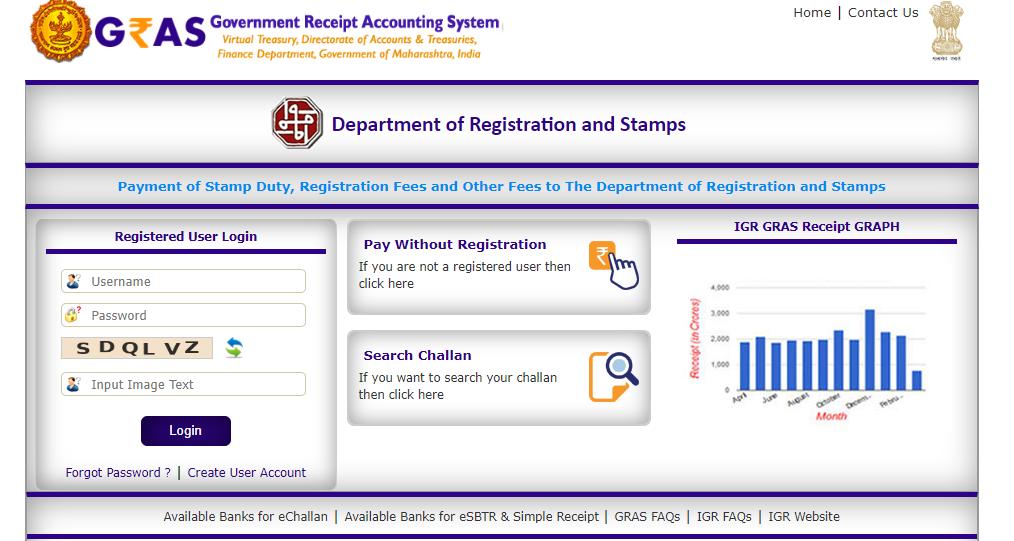 Online Payment to pay stamp duty
Online Payment to pay stamp duty
2. Authorized Banks: Stamp duty can also be paid through authorized banks. These banks issue e-stamp certificates, which are considered valid proof of payment.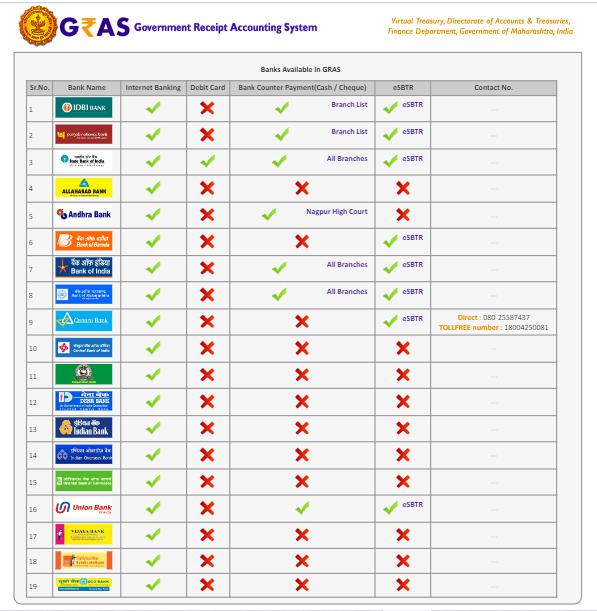 Authorized Banks for e-stamping
Authorized Banks for e-stamping
3. Franking: Franking is another method where stamp duty is paid through authorized franking agents who emboss a stamp on the document.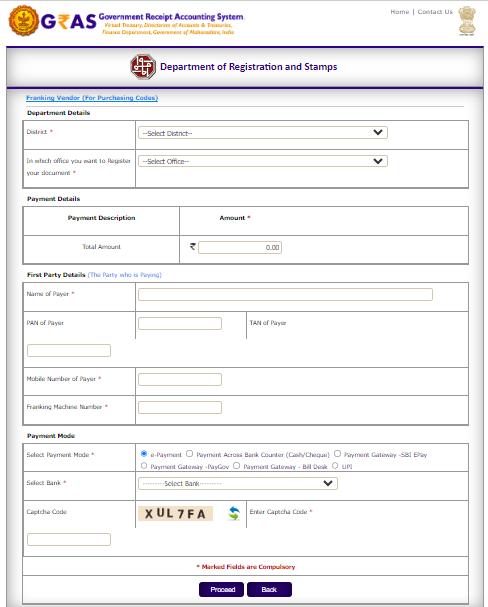 Franking Vendor
Franking Vendor
Common Transactions Requiring Stamp Duty
1. Real Estate Transactions: Buying and selling property involves significant stamp duty costs. The duty is calculated based on the transaction value or the market value of the property, whichever is higher.
2. Lease Agreements: Lease agreements for commercial and residential properties attract stamp duty. The rate depends on the lease duration and the annual rent.
3. Mortgage Deeds: Mortgage deeds also require stamp duty payment. The duty is based on the loan amount secured by the mortgage.
Impact of Stamp Duty on Real Estate Market
Stamp duty plays a crucial role in the real estate market. High stamp duty rates can significantly increase the overall transaction cost for buyers, potentially affecting buyer sentiment and reducing the affordability of properties. When stamp duty rates are high, potential buyers might hesitate to proceed with transactions due to the added financial burden, which can lead to a slowdown in the real estate market. This can be particularly impactful in high-value property markets, where even a small percentage of stamp duty translates to a substantial amount.
Conversely, reductions or exemptions in stamp duty can stimulate market activity by making transactions more affordable and attractive to buyers. Lower stamp duty rates reduce the upfront costs associated with purchasing property, thereby encouraging more people to invest in real estate. This can lead to increased transaction volumes, revitalizing the market, and promoting economic growth. Government initiatives that offer temporary reductions or exemptions, especially during economic downturns, have historically shown to boost buyer confidence and stimulate market activity.
Conclusion
The Maharashtra Stamp Act is a vital piece of legislation that ensures the proper documentation and taxation of legal instruments. It plays a crucial role in maintaining the legal validity of various transactions and generating revenue for the state. Staying informed about the latest updates and understanding the various aspects of the Act can help individuals and businesses navigate the legal landscape more effectively, ensuring compliance and avoiding potential penalties.
As we move further into 2024, the emphasis on digital processes and transparency continues to shape the implementation of this important law. The introduction of digital stamping, e-registration, and revised stamp duty rates are steps towards making the system more efficient and user-friendly. By embracing these changes, Maharashtra aims to streamline procedures, reduce fraud, and enhance the overall ease of doing business, thereby fostering a more robust and transparent legal environment.
explore further
Latest from Contemporary ideas
More from Innovations
Resources
Dwello, for every home buyer, is a way to go from 'I feel' to 'I know', at no extra cost.




